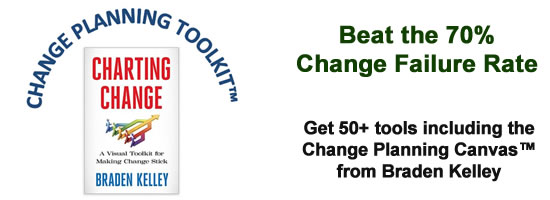Digital Transformation is More about Transformation than Digital

Premise:
It seems like there can’t be a day that goes by when I don’t hear the word transformation being tossed around, usually with the prefix – Digital. At a deep level, I think everyone knows and understands that transformation of any kind is not only difficult but in most cases has an extremely low probability of success.
The term digital transformation is a misnomer which has quite a lot of people confused. It is first and foremost transformation, of course enabled by digital technologies but people confuse this with digital becoming the operating word instead of transformation. This is probably where most trouble start with all digital transformation projects.
And yet, everyone talks about digital transformation as if they are pretty sure that their project will, not only see the light of the day, but also be very successful.
Just like in the past people used terms like “innovation” and “disruption” so much and in so many different context and meaning so many different things that they lost their relevance amongst people. Looks like digital transformation is going the same way.
Acceptance:
I believe that in order to even have a shot at success, all {digital} transformation projects need to start from a place of acceptance – accepting the current reality or the state of affairs. And true acceptance can only happen if we own the role that we have played in creating and shaping the current reality.
The questions that need to be answered at this stage are the following:
- What is our current reality?
- What was our role in creating this?
- Are we happy with this reality?
If we are happy with our reality, there is nothing much to do except to continue doing what we have done all along. No transformation is needed. You can’t force-fit this on a set of people who are happy with their reality.
If we are unhappy with our reality, the question then is does it hurt? And how much does it hurt? Does it hurt enough for the people to want to change? Change is difficult in and of itself, becomes a lot more difficult if done without wanting to change.
Vision:
Once we decide that the current reality is hurting us enough and that we want to do something about it, we need to come up with a vision of what the future looks like. This is where taking on a Leapfrog challenge would be a good start.
Leapfrog challenges, according to Porus Munshi are typically challenges that force you to rethink the way you do things. This is your aspiration. The bigger and bolder the aspiration, the more you are talking about transformation.
A good example of digital transformation was the onset of ATM machines. They fundamentally changed how we Interacted with banks. The same Is now happening with peer to peer lending and the revolution that fintech firms are ringing In.
The goal of any transformation project Is to reimagine work, not to do the same faster or cheaper or better. There Is a place for doing that – those projects are called continuous Improvement projects.
Even if we are going after making things better, faster and cheaper, we need to look at the scale of impact. Porus talks about (in his book – Making Breakthrough Innovations Happen) is that it is better to take on 10x challenges rather than 20 or 30% challenges. When you are trying to do a 20, 30 or even 40% improvement, you tend to try and do more of the same, work harder, reach out to more people, get more efficient, increase your sales conversion ratio, etc.
However, the moment you are attempting a 10x improvement, you know right away that doing more of the same is not going to help. You are then forced to think differently, explore newer ways of working. You tend to go look for completely new opportunities, you get the permission to challenge the assumptions that the entire business or even industry is operating in and therein lies the true opportunity to transform.
Alignment:
Then comes the need to share this vision and get the teams rallying around the vision. This is not going to be easy. By definition, a 10x improvement project is going to sound too difficult. It is going to look improbable.
It is going to bring out all kinds of excuses from the team –
- this Is just Impossible;
- no one has ever done this;
- we don’t have the ability or the talent to do this;
- we don’t have the Budget for this;
- our partners will not agree
- our margins don’t support this
and many more!!!
This should tell the leader that you are on the right path. If you don’t get these kinds of responses means that you haven’t aimed high enough.
However, It Is now the responsibility of the leader to get the teams aligned and agree to the vision that you want to go towards. Usually, this can be done In one of two ways:
Burning platform scenario: Show the team the grim reality of the present course of action and what that means for all. Make them feel the pain all of the team will have to endure If everything remains as on course & then show them that the only option is to burn our ships and march forward toward the new reality. The Idea here Is to scare them enough about the current course, that everyone wants to change and move toward the new vision.
Garden of eden scenario: Talk about all the great things that this new reality can bring to fruition. This Is when you motivate the team by the vision of a reality that Is so much better than their current reality that there Is no doubt In everyone’s minds that the new reality Is where their future lies. This Is all about enticing them with the gifts that the new vision will bring them once realised.
It’s easier to use the burning platform as humans typically react much stronger to negative emotions than positive emotions. However, leaders need to be careful about which strategy to use as people are not dumb and can easily see through any kind of deception. So, If you are not on a burning platform don’t use one or find a way to create one that all can agree and then use It to kick start your transformation project.
In conclusion:
Two of the most Important success criteria of a transformation project – digital or otherwise Is the scale of transformation aimed for and If there Is buy-In among the people who will be working on the project. These are the necessary but not sufficient conditions for any transformation project to become successful.
Strong execution Is another necessary but not sufficient condition for successful transformation projects. We will talk about execution In a subsequent post.
A version of this post first appeared on “Musings of a Neo-Generallst†and has been republished here with permission.
Image Credit: Pixabay
Wait! Before you go…
Choose how you want the latest innovation content delivered to you:
- Daily — RSS Feed — Email — Twitter — Facebook — Linkedin Today
- Weekly — Email Newsletter — Free Magazine — Linkedin Group
 Mukesh Gupta is Director of Customer Advocacy, SAP India Private Limited. He also served as Executive Liaison for the SAP User group in India, and as a Global Lead in Sales & Business Development. He blogs, and shares podcasts and videos, on his site rmukeshgupta.com
Mukesh Gupta is Director of Customer Advocacy, SAP India Private Limited. He also served as Executive Liaison for the SAP User group in India, and as a Global Lead in Sales & Business Development. He blogs, and shares podcasts and videos, on his site rmukeshgupta.com
NEVER MISS ANOTHER NEWSLETTER!
LATEST BLOGS
The Incredible Shrinking Laptop
As technology advances and people’s demands for ever-thinner, ever-lighter laptops increase, more and more the thickness of a laptop is…
Read MoreA Revolution in Management Consulting?
Management consulting firms are built on a model that requires the maintenance of a bench of their people to staff…
Read More




Really unique view on the trends. Very informational article. We have published an article on digital transformation in the form of infographics. I will be glad to get a review from you.